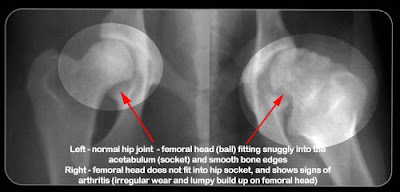Holiday
Toxins
By Dr. Erica Pailer
During
the Holiday season there are a lot of changes in most households that provide
great enjoyment for people, but pose potential health risks to our pets. Here are some of the most common problems veterinarians encounter with pets over the holidays.
Dangerous
foods:
-
Chocolates: Chocolate contains caffeine and methylxanthines, which are toxic for pets. When ingested by
pets, these products can cause vomiting and diarrhea, hyperactivity, and in
large quantities can even cause high heart rate, seizures or death. Semi-sweet or baking
chocolates contain the highest levels of methylxanthines and pose the greatest
risk when ingested. Dark chocolates also contain large amounts of the toxin and
can be serious when only small amounts are ingested. Milk chocolate contains
less methylxanthine, but can still cause problems if large enough quantities
are ingeseted. If your pet ingests chocolate, call your veterinarian for
advice. It is helpful if you know the type and quantity of chocolate ingested
so that we can determine how toxic the pet's dose of methylxanthine is expected
to be.
 -
Alcohol: When pets ingest alcohol it can have the same adverse effects as when
people ingest too much alcohol. Ingestion of alcohol can cause vomiting,
diarrhea, decreased coordination, central nervous system depression, tremors,
coma, and even death. Unfortunately when our pets get into something tasty that
contains alcohol, they don't have the inhibitions to stop before they ingest
serious and potentially fatal amounts.
-
Alcohol: When pets ingest alcohol it can have the same adverse effects as when
people ingest too much alcohol. Ingestion of alcohol can cause vomiting,
diarrhea, decreased coordination, central nervous system depression, tremors,
coma, and even death. Unfortunately when our pets get into something tasty that
contains alcohol, they don't have the inhibitions to stop before they ingest
serious and potentially fatal amounts.
 -
Alcohol: When pets ingest alcohol it can have the same adverse effects as when
people ingest too much alcohol. Ingestion of alcohol can cause vomiting,
diarrhea, decreased coordination, central nervous system depression, tremors,
coma, and even death. Unfortunately when our pets get into something tasty that
contains alcohol, they don't have the inhibitions to stop before they ingest
serious and potentially fatal amounts.
-
Alcohol: When pets ingest alcohol it can have the same adverse effects as when
people ingest too much alcohol. Ingestion of alcohol can cause vomiting,
diarrhea, decreased coordination, central nervous system depression, tremors,
coma, and even death. Unfortunately when our pets get into something tasty that
contains alcohol, they don't have the inhibitions to stop before they ingest
serious and potentially fatal amounts.
-Xylitol:
Xylitol is used as a sweetener in many products, including sugar-free gum and
candy. It can cause decreased blood glucose levels and at very high doses can
lead to liver failure. Initial signs of toxic ingestion include vomiting,
lethargy and loss of coordination. Signs can progress to recumbancy (laying on the side and not moving), seizures,
and can lead to death.
-Moldy Foods: Some molds produce toxins called
tremorgenic mycotoxins, which can cause serious or even life-threatening
problems if ingested. Unfortunately, it’s not possible to determine whether a
particular mold is producing tremorgenic mycotoxins, so the safest course of
action is to avoid feeding dogs moldy food and to keep trash or moldy debris
out of reach of our pets. The signs of tremorgenic mycotoxin poisoning
generally begin as muscle tremors that progress to convulsions that can lead to
death in severe cases. If your pet begins to have muscle tremors, especially
after getting into the garbage, you should contact your veterinarian for advice
immediately.
-Left overs: Scraps of meat and other fatty foods can cause vomiting, diarrhea, and even potentially life-threatening inflammation of the pancreas. It is best not to offer your pets table scraps and to make sure the garbage is promptly removed to prevent pets from scavenging the left overs for themselves.
 |
| Moldy bread (or other items) may be in your garbage, available for your pet to find. |
-Left overs: Scraps of meat and other fatty foods can cause vomiting, diarrhea, and even potentially life-threatening inflammation of the pancreas. It is best not to offer your pets table scraps and to make sure the garbage is promptly removed to prevent pets from scavenging the left overs for themselves.
-Snow globes: The liquid in these decorations can
contain poisonous chemicals such as ethylene glycol (the active ingredient in antifreeze), which can be fatal if
ingested.
-Tinsel:
Many cats like to play with tinsel. Unfortunately, if ingested, tinsel can cause
an obstruction and severe damage to the intestinal tract. Treatment
frequently requires surgery.
 |
| Tinsel may look pretty, but is very dangerous for your cat! |

-Plants: While widely thought to be toxic, poinsettia plants only cause mild oral irritation and rarely GI upset. Plants we see around the holidays that are of much more concern include lilies, mistletoe and holly. Lilies are of the highest concern because when ingested, they can be fatal and cause kidney failure in cats. Mistletoe and holly berries can cause vomiting, diarrhea, and even heart arrhythmias.
To help enjoy a safe and fun holiday season, we encourage everyone to be consientious about keeping potential harmful foods and decorations out of reach of your pets. If you are unable to keep a close eye on your pets while cooking or entertaining guests, putting your pet in it's kennel, crate, or a pet-proofed room can prevent potentially devestating and costly veterinary emergencies.
Check out the video here to learn more about dangers to your pet around the holidays!
If your pet does happen to ingest something she shouldn't have, Noah's Central Animal Hospital and 24 Hour Emergency Center is available to help you 24 hours a day, 365 days a year! If you are in in the Indianapolis area and need help with your pet, call us at 317-253-1327!
































